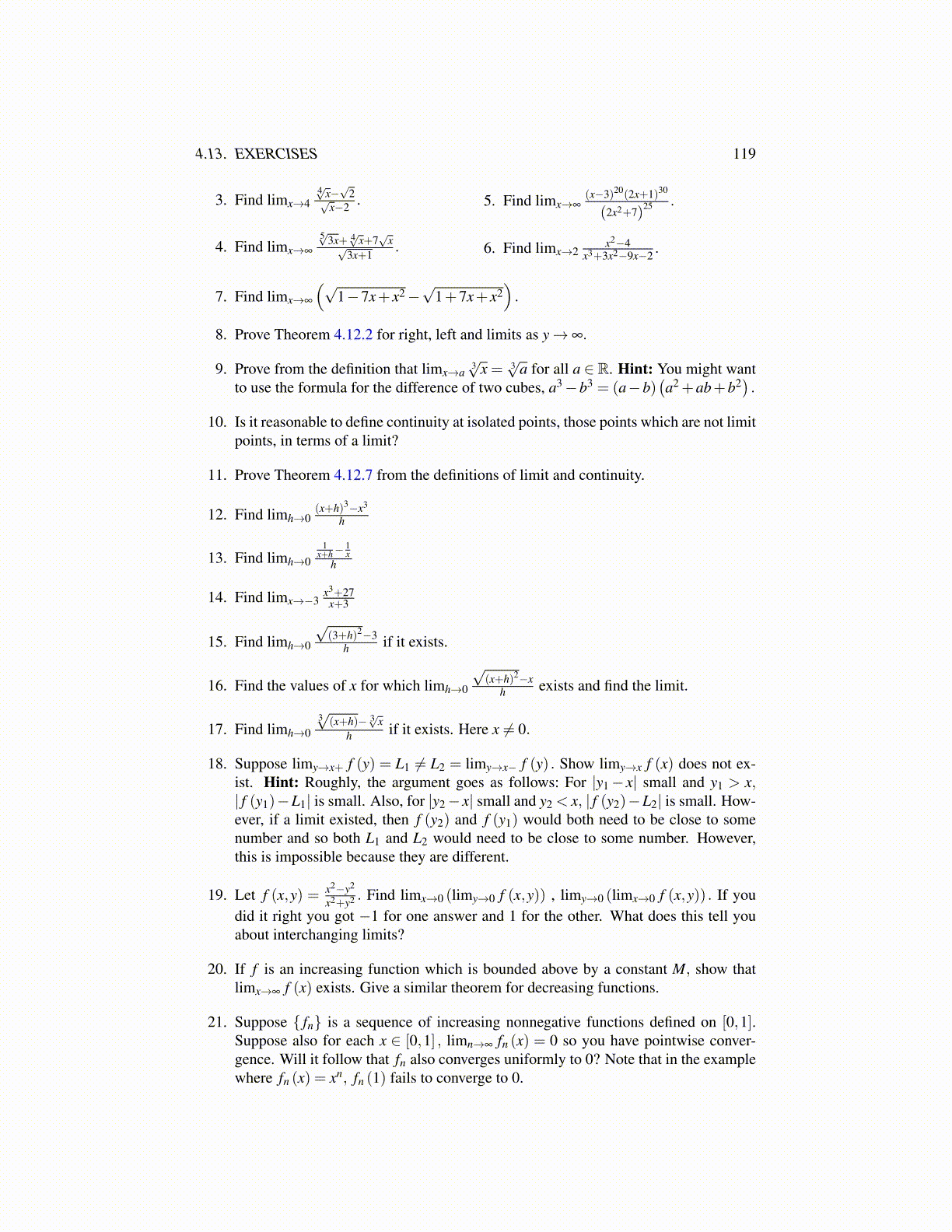
4.13. EXERCISES 119
3. Find limx→44√x−
√2√
x−2 .
4. Find limx→∞
5√3x+ 4√x+7√
x√3x+1
.
5. Find limx→∞(x−3)20(2x+1)30
(2x2+7)25 .
6. Find limx→2x2−4
x3+3x2−9x−2 .
7. Find limx→∞
(√1−7x+ x2 −
√1+7x+ x2
).
8. Prove Theorem 4.12.2 for right, left and limits as y → ∞.
9. Prove from the definition that limx→a3√
x = 3√
a for all a ∈ R. Hint: You might wantto use the formula for the difference of two cubes, a3 −b3 = (a−b)
(a2 +ab+b2
).
10. Is it reasonable to define continuity at isolated points, those points which are not limitpoints, in terms of a limit?
11. Prove Theorem 4.12.7 from the definitions of limit and continuity.
12. Find limh→0(x+h)3−x3
h
13. Find limh→01
x+h−1x
h
14. Find limx→−3x3+27x+3
15. Find limh→0
√(3+h)2−3
h if it exists.
16. Find the values of x for which limh→0
√(x+h)2−x
h exists and find the limit.
17. Find limh→03√
(x+h)− 3√xh if it exists. Here x ̸= 0.
18. Suppose limy→x+ f (y) = L1 ̸= L2 = limy→x− f (y) . Show limy→x f (x) does not ex-ist. Hint: Roughly, the argument goes as follows: For |y1 − x| small and y1 > x,| f (y1)−L1| is small. Also, for |y2 − x| small and y2 < x, | f (y2)−L2| is small. How-ever, if a limit existed, then f (y2) and f (y1) would both need to be close to somenumber and so both L1 and L2 would need to be close to some number. However,this is impossible because they are different.
19. Let f (x,y) = x2−y2
x2+y2 . Find limx→0 (limy→0 f (x,y)) , limy→0 (limx→0 f (x,y)) . If youdid it right you got −1 for one answer and 1 for the other. What does this tell youabout interchanging limits?
20. If f is an increasing function which is bounded above by a constant M, show thatlimx→∞ f (x) exists. Give a similar theorem for decreasing functions.
21. Suppose { fn} is a sequence of increasing nonnegative functions defined on [0,1].Suppose also for each x ∈ [0,1] , limn→∞ fn (x) = 0 so you have pointwise conver-gence. Will it follow that fn also converges uniformly to 0? Note that in the examplewhere fn (x) = xn, fn (1) fails to converge to 0.